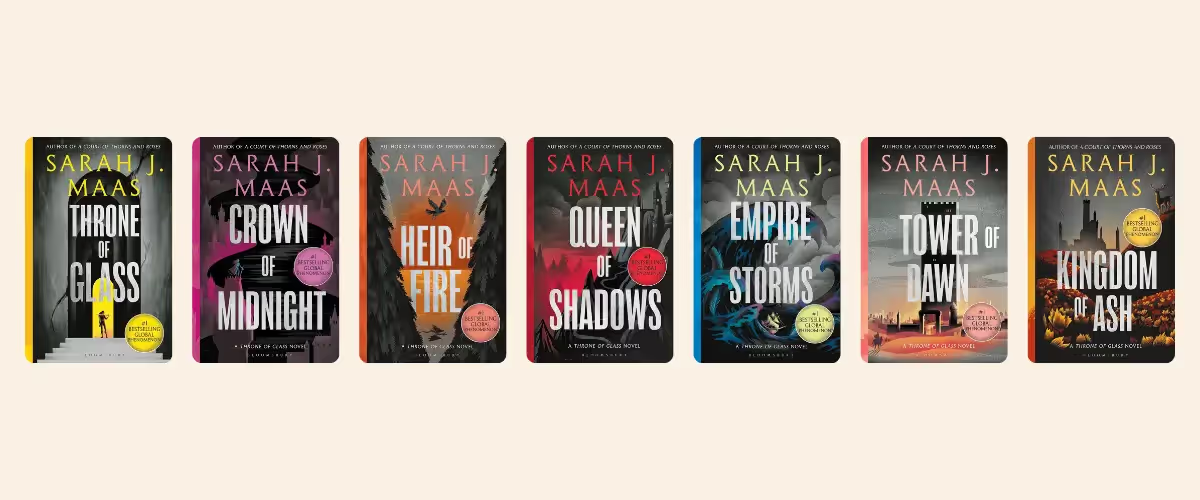Symbolism goes far beyond what most of us studied in English class. It’s a strong way to develop a story’s themes and messages. Understanding different types of symbols and how to use them is a powerful tool for us as writers to deepen our work and express complex ideas in an evocative way. So, whether your symbols are contextual, character-based, or universal, author and writing coach Ella McLeod is here to enlighten us all on the ways symbolism can elevate our story in subtle and dramatic ways.

An introduction to symbolism in literature
I often say that writing and reading are acts of radical empathy. The ability to visit other worlds, experience foreign situations, joys, adventures, and trials. Symbolism is vital to the act of empathizing; for writers, it’s the juicer we use to extract all that lovely, tart emotion from our readers. Symbolism preys on the familiar and the relatable to allow a way into the unfamiliar—it squeezes a reader’s insides, yielding all the pulp and seeds of empathy.
In fact, I’d go as far as to say symbolism is superior to juicers—a single-use item it is not. Symbols enrich our stories, create tone and atmosphere, and serve as a way for writers to convey complex ideas and themes. While symbolism can often be subtle and layered, its ability to evoke deeper meanings makes it a crucial part of the reading experience.
Today, we will dive into literary symbolism, the craft, the basics, its role in fiction, and the various types of symbolism that readers commonly encounter. A thorough knowledge of craft can be so helpful when writing—so how can symbols serve your story?
What is symbolism?
Let’s start with a word from our dear friend, Merriam-Webster:
1. The art or practice of using symbols especially by investing things with a symbolic meaning or by expressing the invisible or intangible by means of visible or sensuous representations: such as
a: artistic imitation or invention that is a method of revealing or suggesting immaterial, ideal, or otherwise intangible truth or states
b: the use of conventional or traditional signs in the representation of divine beings and spirits
2. a system of symbols or representations
—Merriam-Webster
Now, I’ve been known to be rather dismissive of Madam Merriam-Webster in the past, but credit where it’s due, she’s got far better at nuance lately. While at its core, symbolism uses objects, events, and imagery to represent something more than their literal meaning, there’s something more to it than that, which Merriam-Webster speaks to here.
Symbols can make tangible the intangible and can use something conventionally understood to represent something divine or abstract or ineffable. Perhaps, then, a symbol is less a juicer, but more a vessel—a ship sailing through the dark, opaque sea, carrying with it a weight of deeper meaning, guiding the reader to think beyond what is directly presented in the story.
{{blog-banner-13="/blog-banners"}}
The role of symbolism in literature
Symbolism allows authors to communicate complex ideas without explicitly stating them, giving readers the opportunity to engage with a text on a deeper level. It’s vital to the process of showing, not telling, allowing us to subtly reinforce the themes we are exploring in our work. By incorporating symbols, we can elevate our writing, allowing readers to interpret the work through a more profound, multifaceted lens.
.avif)
Types of symbols
Symbols in literature are not all created equal. Some are universally understood, while others are specific to the context of a particular text. Understanding the different types of symbols can help readers better grasp the significance of what they are reading. Let’s dive a little deeper...
Contextual symbols
Contextual symbols derive their meaning from the specific narrative or context in which they appear. These symbols might not have inherent meanings outside of their particular work, so readers must pay close attention to how they function within the story. A prime example of a contextual symbol is the green light in F. Scott Fitzgerald’s The Great Gatsby. While a green light could symbolize a number of things, in the context of the novel, it becomes a powerful symbol of Gatsby’s hope and unattainable dreams. You can read more here about how symbolism is used in The Great Gatsby, and how it has impacted its readers across the years.
Character symbols
Sometimes, entire characters can function as symbols. Rather than representing a single idea, they embody a set of themes or values. In Louisa May Alcott’s Little Women, the four March sisters fulfill archetypes (more on this later!) and therefore symbolize the various societal expectations of women—Meg the mother, Jo the rebel/tom-boy, Amy who struggles to identify as more than her looks, and Beth the innocent.
Universal symbols
Some symbols have meanings that are widely accepted across cultures. We see this quite often in the use of color, for example. The color red is passion, blue is sadness, yellow is happiness... These transcend the boundaries of a single story, culture, or tradition, and their meanings are almost universally understood. Because they resonate on such a deep level with the human experiences of many readers, these symbols often evoke immediate emotional reactions.
Take, for instance, the theme of freedom. A bird might symbolize freedom, not simply because birds are capable of flying, but because of what flying represents—escape, independence, or even a longing for something unattainable. Through such symbols, authors communicate broader ideas about society, human nature, or personal struggle, helping readers connect emotionally and intellectually with the story.
.avif)
Other examples of symbols include those that are so universal, we have specific language to refer to their usage:
Metaphor
A metaphor is a figure of speech that describes an object or action as something other than what it is. It directly compares two unlike things by stating that one thing is another. This comparison helps convey meaning or a deeper understanding of the subject. For example: Time is a thief. (Time isn’t literally a thief, but the metaphor suggests that time steals moments from our lives.)
Simile
A simile is a figure of speech that makes a comparison between two different things using the words ‘like’ or ‘as.’ Similes are used to highlight similarities between two things to make a description more vivid or relatable. Her smile was as bright as the sun, for example.
Allegory
An allegory is a narrative in which characters, events, or settings symbolize abstract ideas or moral qualities. It is often used to teach lessons or convey deeper meanings about human experiences or societal issues. For example, George Orwell’s Animal Farm is an allegory that represents the Russian Revolution, with farm animals symbolizing different classes and political figures.
Symbolism allows authors to communicate complex ideas without explicitly stating them, giving readers the opportunity to engage with a text on a deeper level.
—Ella McLeod
Personification
Personification is a literary device in which non-human things, such as animals, objects, or ideas, are given human qualities or characteristics. This is often used to create a sense of familiarity or evoke empathy for something inanimate. For example: The wind whispered through the trees. (The wind is given the human quality of whispering.)
Pathetic fallacy
Another literary device in which human emotions or feelings are attributed to nature or inanimate objects. It’s often almost a type of personification where the environment, weather, or natural elements reflect the emotions or mood of a character or the atmosphere of the scene. This technique is often used to enhance the emotional tone of a narrative. For example, a storm might represent chaos, conflict, or emotional turmoil. The storm doesn’t just describe the weather; it conveys underlying emotional or thematic depths that enhance the narrative.
Metonymy and Synecdoche
Metonymy: A figure of speech where one thing is replaced by something closely associated with it. It’s not a direct part-to-whole relationship, but rather, one thing standing in for another due to its connection. For example, The White House issued a statement (The White House is used to represent the president or the U.S. government).
Synecdoche: A figure of speech in which a part of something is used to represent the whole, or the whole is used to represent a part. It’s a specific type of metonymy. For example: All hands on deck (where ‘hands’ represents the whole person).
Archetype
An archetype is a typical character, action, or situation that is symbolic of universal patterns of human nature. These recurring symbols or themes appear across literature, myths, and folklore and are recognized as foundational or original models. For example, the Hero’s Journey is an archetypal story structure in which the protagonist goes on an adventure, faces a crisis, and returns transformed. For more on the archetype aspect of symbolism, check out L.R. Lam’s brilliant blog all about archetypes.
.avif)
The role of symbolism in creating meaning
Symbols are an essential element in the development of a story’s themes and messages. They allow writers to express complex ideas that would otherwise be difficult to communicate in a straightforward manner. A single symbol can serve as a shorthand for an entire concept or emotion, helping to crystallize the core of a work.
For example, in 1984 by George Orwell, the image of Big Brother is symbolic of surveillance, control, and the loss of personal freedom. It is a kind of synecdoche, the use of the title of the leader to refer to the whole totalitarian state. Every time the words ‘Big Brother is watching you’ are spoken, they serve not only as a reminder of the omnipresence of the authoritarian government but also as a symbol of the themes of oppression that permeate the novel.
The power of symbolism lies in its ability to engage the reader’s imagination. By encouraging readers to consider the deeper significance of objects, characters, and events, symbolism invites them to make connections between the text and their own experiences or broader cultural concepts. This process of interpretation enriches the reading experience, allowing readers to uncover layers of meaning that go beyond the surface narrative.
A single symbol can serve as a shorthand for an entire concept or emotion, helping to crystallize the core of a work.
—Ella McLeod
Famous examples of symbolism in literature
Harry’s scar in the Harry Potter series by J.K. Rowling
The boy with the lightning scar is perhaps one of the most famous and enduring images of the series, and it’s a symbol that works consistently throughout the novel to reiterate a myriad of themes. It’s a visual representation of the danger that seems to dog each of Harry’s steps, and it keeps his trauma ever-present in the mind of the reader. A not-quite-healed wound on the face of a protagonist not only centers images of violence, but the fact that the scar is shaped like lightning—an almost universal symbol for chaos and strife—speaks volumes.
.avif)
The conch in Lord of the Flies by William Golding
In Lord of the Flies, the conch shell initially symbolizes civilization, order, and authority. When Ralph and Piggy find the conch, they use it to summon the other boys on the island, symbolizing their hope to establish a structured, democratic society. However, as the boys descend into savagery, the conch’s power erodes. It is eventually shattered, representing the collapse of order and the complete descent into chaos. The conch represents the fragility of civilization and how easily it can be destroyed when people abandon societal norms and rules.

The mockingbird in To Kill a Mockingbird by Harper Lee
In Harper Lee’s To Kill a Mockingbird, the symbol of the mockingbird represents innocence, purity, and the destruction of innocence. Throughout the novel, Atticus Finch teaches his children that it is a sin to kill a mockingbird because they do nothing but sing and bring beauty to the world. This idea is reflected in the characters of Tom Robinson and Arthur ‘Boo’ Radley, both of whom are innocent but suffer due to prejudice and misunderstanding. Tom Robinson is unjustly accused and convicted of raping a white woman, while Boo Radley, a reclusive figure, is initially seen as a monster by the town but is, in fact, a kind and protective person. The mockingbird, therefore, symbolizes the vulnerable individuals who are wronged by society.
.avif)
The white stag in the Throne of Glass series by Sarah J. Maas
In this series, the white stag serves as a powerful symbol of both freedom and destiny. It appears as a recurring motif associated with Celaena Sardothien (Aelin Ashryver Galathynius). The stag symbolizes her connection to her lost heritage, the Fae world, and her eventual role in reclaiming her kingdom. It embodies strength, transformation, and the call to her true identity as a leader and ruler.
Historically, stags in literature have symbolized strength and nobility and have been called Kings and Princes of the Forest. In many cultures, stags are associated with divine or supernatural forces, and their presence in myths and legends signifies transformation, enlightenment, or a connection to nature and the divine. So it makes sense that here the stag is not only a connection to Aelin’s Fae blood, but also a symbol of her evolution and her character’s motivations, balancing both her power and freedom.

Achilles’s heel in The Song of Achilles by Madeline Miller
While Miller doesn’t rely on the much later addition to the story of Troy that attributes Achilles’s prowess in battle to an invincibility that excludes his heel, his heels feature as a symbol nonetheless. His speed, his agility, and the impressive magnetism of his physicality are focal points of our protagonist Patroclus’s narrative—and his attraction. They are described as ‘flashing pink as licking tongues,’ when Achilles runs, connecting them to both his gods-given speed while being an image of softness, of vulnerability, perhaps a drawing on a shared cultural preconception.
We expect vulnerability when we think of Achilles’s heel. It’s not a plot point, but it is given to us all the same. It’s particularly poignant in the context of Achilles’s relationship with Patroclus. While Achilles is destined for glory and seemingly untouchable, his fatal flaw is his inability to escape his predetermined fate. And so the heel also becomes a symbol for the emotional vulnerability that Achilles feels—his deep love for Patroclus, which, like his physical weakness, makes him susceptible to grief and loss and, in turn, seals his fate.

And in my novels...
In my debut novel, Rapunzella, Or, Don’t Touch My Hair, Zella’s hair is probably the most important symbol. Not only does it serve as a metaphor for the oppression of her people, but it is also personified as her defender against the King (himself a symbol, an archetype, for the forces of white supremacy and misogyny), imbued with the power of her fear and rage and magic. Black women’s hair has been so often maligned, and so I wanted to use hair as a symbol for that denigration and the subsequent need/desire to rebel against it. The story really came to life around this symbol—it’s evocative and exciting and allows readers a lens through which to view the experiences of black women. If this experience is not one that they share, it gives them insight. If it is one that is familiar to them, they feel seen and understood.
In my second novel, The Map That Led To You, the Pirate Prince Ezi is initially a symbol for everything that Levi, my protagonist and Ezi’s son, is not—mortal, human, confident, a leader. As Levi develops, he learns that he and his father have more in common than he realized, that there is understanding there. This is symbolized by Ezi’s use of metonymy; he refers to himself as Drag or The Dragon. As his ship is called The Sea Dragon, this serves as a symbol for his crew, his life, his purpose and identity.
.avif)
As we can see, symbolism is a vital part of storytelling. It adds depth and layers of meaning, allowing readers to connect emotionally and intellectually with the narrative. It enhances themes and encourages interpretation—as well as introspection—making the story more engaging and impactful. Now that we’ve seen how well-crafted symbols can unify a narrative and highlight key ideas, let’s look at how we can take what we’ve learned and apply it to our own writing.
So, why use symbolism?
Symbolism is a powerful tool in literature and creative writing. It can deepen the meaning of a piece, add layers to your narrative, and evoke emotional responses from your readers. I get such a kick out of creating interesting, vivid symbolism in my writing, particularly when I find something articulate that really enhances themes or offers a degree of foreshadowing. More satisfying still are those symbols that feel mundane or everyday but, when layered with meaning, create a unique relationship between the reader and the story. They can make a story feel universal and timeless.
In my forthcoming adult novel, Andromeda (Transworld, May 2026), I use figs as a symbol of womanhood, of burgeoning sexuality, of a desperate clawing for independence and the fulfillment of personal desire. This novel isn’t out yet, so I can’t be too specific, but I will say this: the fig’s life cycle relies on a wasp for pollination. Female wasps enter the fig to lay eggs, and their larvae hatch inside the figs before feeding on the fig’s flowers. The larvae mate with each other and, after, the male wasps dig tunnels to exit, dying inside. The fertilized female wasps then leave to find new figs, continuing the cycle.
I am not the first to find something brutal and wonderful in the image of a fig, and that’s what’s so wonderful about symbolism—the same symbol can be used to reference previous uses, subvert a universal understanding of itself, or create something entirely new.
I get such a kick out of creating interesting, vivid symbolism in my writing, particularly when I find something articulate that really enhances themes or offers a degree of foreshadowing. More satisfying still are those symbols that feel mundane or everyday but, when layered with meaning, create a unique relationship between the reader and the story.
—Ella McLeod
Think of some other symbolic uses of fruit—perhaps apples in fairy tales. Pomegranates in Greek mythology. Or the use of fruit more generally in texts like the Christina Rossetti poem, Goblin Market. From the Bible to The Priory of the Orange Tree by Samantha Shannon, we continually engage with fruit imagery and come to new conclusions, asking new questions.

Five ways to choose and create symbols in your writing
Now that you know the benefits of symbolism, let’s discuss how to incorporate it into your writing. Here are some steps to guide you:
1. Start with your themes
The first step in incorporating symbolism into your writing is to decide on the themes of your story. What ideas do you want to explore? These could be abstract concepts like love, freedom, loss, or identity, or more specific themes and complex concepts such as corruption, change, or societal expectations. Once you know your themes, you can begin to think about how to express these ideas symbolically.
For example:
- If your theme is freedom, you might use symbolism in birds, open fields, or unlocked doors.
- If your theme is death or mortality, then darkness, withering flowers, or winter might work.
2. Use everyday objects
Some of the most powerful symbolism in literature comes from everyday objects. Think about how common objects can carry different meanings based on their context in your story.
For instance:
- A mirror can symbolize self-reflection or vanity.
- Rings can symbolize commitment, love, or eternity.
- A key can symbolize power, secrets, or freedom.
By infusing ordinary objects with symbolic meaning, you can create a subtle and powerful connection between the object and your story’s themes.
3. Tie symbols to characters
Symbols can also be used to deepen character development. Consider giving a character a symbolic item, behavior or mannerism, or a relationship that reflects their inner conflict or journey. For example, someone who keeps a worn-out photograph of a lost loved one might symbolize grief or the inability to let go of the past.
Alternatively, specific clothing or a hairstyle might represent a societal role or identity, while a significant color (red for passion or blue for sadness, perhaps) can symbolize emotions or aspects of someone’s personality.
4. Create recurring symbolism
A symbol is most effective when it is repeated throughout the story. This recurrence builds emotional weight and resonates more deeply with readers. It should be present at key moments, ideally connected to the story’s turning points or emotional peaks.
For example, in The Catcher in the Rye, Holden Caulfield is often associated with the idea of the catcher in the rye—a figure who protects children from falling off a cliff. This reinforces Holden’s desire to protect innocence and his resistance to growing up.
5. Avoid the literal sense and be subtle with your symbols
While it can be tempting to spell out the meaning of your symbols, the best use of symbolism is often the most subtle. Trust your reader to recognize and interpret them. Don’t over-explain, don’t be obvious, and avoid using too many symbols in one story, as this can overwhelm the reader and dilute the effect.
The power of symbolism and symbolic meanings in fiction
What is most vital in using symbolism in stories is the ability to choose those that align with your themes and characters. This will allow your words and images to lodge themselves under your reader’s skin, creating a narrative that will resonate long after they’ve finished the story. Remember: the best symbols are often the ones that aren’t explained too explicitly, allowing the reader to interpret their meaning.
Have fun experimenting with symbolism in your own writing. Get creative, make magic out of the mundane, and remember—writing is an act of empathy!
Write your novel with coaching from Ella McLeod
If you’re writing romantasy or YA fiction and would appreciate some experienced guidance from an award-nominated published author, Ella is an encouraging and insightful writing coach who can help you on your way. Find out more about how you can work one-on-one with Ella on your own story!
Wherever you are on your writer’s journey, we can offer the complete pathway from coming up with an idea through to ‘The End.’ With personal coaching, live classes, and step-by-step self-paced lessons to inspire you daily, we’ll help you complete your book with our unique one-hour-a-day method. Learn from bestselling authors and publishing editors to live—and love—the writer’s life. Sign up and start today. The Novelry is the famous fiction writing school that is open to all!
.avif)
.avif)

.avif)
.webp)

.avif)